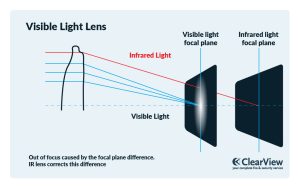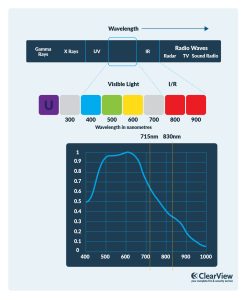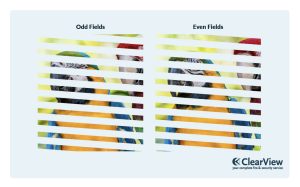Lights, Camera, Action: The Journey of CCTV
In today’s age of heightened security concerns and technological advancements, Closed-Circuit Television (CCTV) cameras have emerged as pivotal tools for ensuring public safety and monitoring spaces. From tracing their origins rooted in artistry to the intricate tech specifications that fuel their modern-day iterations, CCTV cameras are much more than mere surveillance tools.
This comprehensive guide will walk you through the historical evolution, delve deep into the heart of their technology, and arm you with the knowledge to decode complex camera specifications. Whether you’re a tech enthusiast or someone considering CCTV installation, understanding the mechanics and science behind these devices can make all the difference.
The role of cameras in a CCTV system is crucial. But why? Because they form the foundation of any video signal. Tracing its roots back to the Middle Ages, the term ‘camera’ comes from the Latin phrase ‘camera obscura’, or ‘dark chamber’, an invention artists of yore used to trace images. Fast forward to the present day, and you’ll find three types of cameras predominantly in use:
- Film Cameras
- Photographic Cameras
- Video Cameras
Each camera contains a Charge Coupled Device (CCD) chip that significantly impacts its performance. High-quality cameras often incorporate advanced features such as On Chip Lens (OCL), Back Light Compensation (BLC), and excess charge drainage technology. In this article, our focus will be on understanding critical camera specifications.
The CCD Chip: An Unsung Hero in Your Camera
The CCD (Charge-Coupled Device) chip in a camera is a little unsung hero that plays a significant role in capturing high-quality images. Superior cameras typically house advanced chips endowed with innovative features like On-Chip Lens (OCL), Backlight Compensation (BLC), and excess charge drainage technology. These chips truly revolutionise your camera’s capabilities.
Deciphering Camera Specifications
When it comes to camera specifications, the jargon can often feel like a foreign language. But fear not! We’re here to help decode some of the vital elements on any camera data sheet, such as resolution, sensitivity, signal-to-noise ratio, camera voltage, chip type, and operating temperature. It’s worth noting that some data sheets offer extensive details, while others may be more limited.
All About Resolution: The Cornerstone of Image Quality
At the heart of your image quality lies the concept of resolution. Simply put, the resolution of your camera is like the sharpness of a pencil. The sharper the pencil (or higher the resolution), the clearer the picture you can draw. Resolution is measured in lines – the more lines, the higher the resolution, leading to a better image quality.
In a nutshell, resolution equals the quality of definition and clarity of a picture. This quality is determined by the number of pixels (picture elements) in the CCD chip. The more pixels a manufacturer can cram into a CCD chip, the greater the resolution will be. The relationship between resolution and pixels is like peas and a pod; they go hand in hand!
Vertical Vs Horizontal Resolution: A Quick Comparison
Resolution refers to the clarity and definition of a picture, typically defined in lines. Higher resolution equates to better picture quality, which is dependent on the number of pixels (picture elements) in the CCD chip. More pixels in the same size CCD chip result in higher resolution.
Vertical Resolution
In technical terms, vertical resolution equals the number of horizontal lines. Vertical resolution is typically capped by the number of horizontal scanning lines. For instance, in PAL, it’s 625 lines, and in NTSC, it’s 525. Here’s a fun fact: the maximum vertical resolution is .7 of the number of horizontal scanning lines! So, we get:
- PAL: 625 x .75 = 470 lines
- NTSC: 525 x .7 = 393 lines
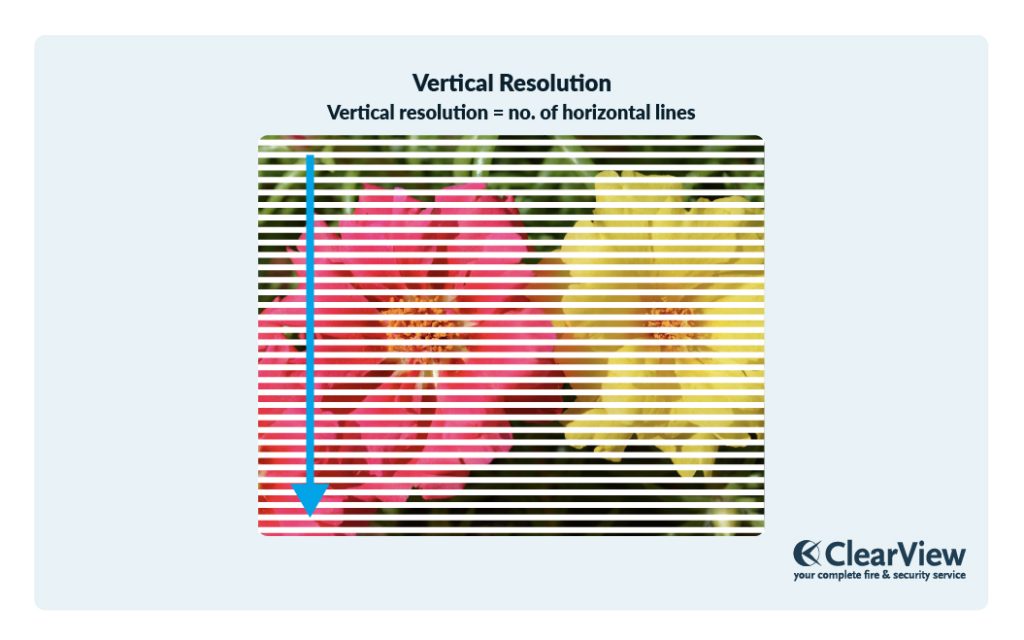
Horizontal Resolution
When we speak of horizontal resolution, we mean the number of vertical lines. In theory, horizontal resolution can be increased infinitely, but it faces two main challenges: increasing the number of pixels in a chip may not always be technologically possible, and increasing the number of pixels reduces the pixel size, which affects sensitivity.
If only one resolution is mentioned in a data sheet, it is usually the horizontal resolution.
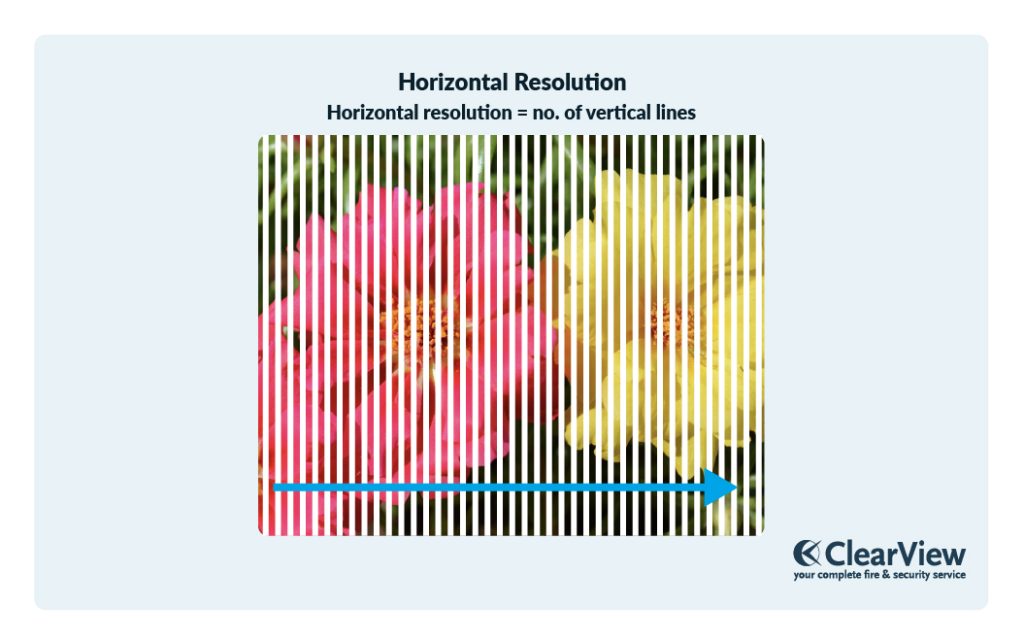
Measuring Resolution: Exploring Different Approaches
There are two primary methods to measure resolution: The Resolution Chart and The Bandwidth Method. Let’s delve a little deeper into both.
The Resolution Chart
Imagine focusing your camera on a chart filled with vertical and horizontal lines. The resolution is measured where the lines start merging, and they can’t be separated. It’s an easy, direct method to gauge your camera’s resolution capabilities.

The Bandwidth Method
The Bandwidth Method is like the Resolution Chart method, but it steps up a notch by measuring the electrical signal bandwidth. It takes into account the fact that the signal’s frequency increases with the resolution.
To wrap up the resolution segment, let’s keep in mind the following: While the resolution is a crucial aspect of image quality, it’s not the only one. Other factors like sensitivity, contrast, colour rendition, and signal-to-noise ratio also play key roles in determining the final image quality.
How Does Sensitivity Impact Your Camera?
Sensitivity is to a camera what the retina is to the eye. It measures the smallest amount of light required by the camera to produce a useful video signal. Sensitivity is expressed in lux (lx), the SI unit of illumination, equivalent to one lumen per square meter.
Two terms often cause confusion in this context: “sensitivity at faceplate” and “minimum scene illumination.”
- Sensitivity at Faceplate: This refers to the minimum light required at the CCD chip to produce an acceptable video picture.
- Minimum Scene Illumination: This term denotes the minimum light required at the scene to produce an acceptable video picture.
Understanding sensitivity involves knowledge of several key variables:
- Reflectance
- F-stop
- Usable video
- AGC (Automatic Gain Control)
- Shutter speed
Reflectance
Reflectance is a critical concept in cameras that relates to the amount of light a subject bounces back based on its surface characteristics. In simple terms, reflectance is the percentage of incoming light that is reflected off a particular surface.
For example, consider two very contrasting surfaces – snow and a black object. Snow, being a highly reflective surface, bounces back around 90% of the light that strikes it. This high reflectance is why snow appears so bright and visually dominant in images.
On the other hand, a black object, known for its low reflectance, returns merely 5% of the incident light. This is because darker surfaces tend to absorb more light, reflecting only a small fraction back to the viewer or camera.
These differences in reflectance can significantly influence the amount of light your camera’s sensor receives, impacting the overall exposure and quality of your image. Hence, understanding and considering reflectance while setting up your shot can greatly assist in producing well-exposed, detailed photographs.

F-stop or Lens Iris Opening
The F-stop, also known as the lens iris opening, is an essential parameter in camera specifications that significantly influences image quality. It refers to the size of the opening in the camera’s lens that allows light to enter and hit the camera’s sensor.
The F-stop is represented by numbers such as F1.4, F2.0, F2.8, and so forth. Interestingly, smaller F-stop values correspond to larger lens openings, which allow more light to reach the camera’s sensor. For instance, a lens with an F-stop of F1.4 has a larger opening and therefore admits more light than a lens with an F-stop of F2.0.
In the context of CCTV cameras, a lower F-stop value is desirable, especially in low-light situations. A camera with a lower F-stop rating is capable of capturing clearer images under less-than-ideal lighting conditions. However, keep in mind that this is one of many factors that contribute to the overall image quality of the camera.
Usable Video
Think of “usable video” as the criteria your footage must meet to serve its purpose. It’s a fluid term, shaped by what you need from the video. For example, a camera might capture an image in near darkness – impressive, right? But if the details, like facial features, remain obscured, is the footage truly useful? Just as you’d choose the right tool for a job, it’s vital to align your camera’s capabilities with your specific needs, ensuring the video produced is genuinely ‘usable’ for its intended purpose.
AGC (Automatic Gain Control)
Imagine you’re trying to listen to a whisper in a quiet room. You’d naturally strain your ears to catch every word. That’s essentially what the AGC does for cameras. It’s an electronic circuit that boosts video signals, especially in low-light scenarios, ensuring you get a clearer picture. However, just as straining too hard might make you hear things that aren’t there, relying excessively on AGC can add unwanted “noise” to your video. The trick is finding the balance for the crispest image without compromising its authenticity.
Shutter Speed
The shutter speed influences the camera’s sensitivity by determining how long the CCD chip is exposed to light. A slower shutter speed increases exposure time, enhancing sensitivity, but it can also lead to motion blur in moving objects. Conversely, a faster shutter speed reduces motion blur but may compromise sensitivity, particularly in low-light conditions.
Camera Voltage: The Lifeblood of Your Camera
Camera voltage is as crucial to your camera as blood is to your body. Cameras operate on different voltages, often between 9-12V DC or 24V AC. It’s essential to match the power supply voltage with the camera’s operating voltage to avoid damage and ensure optimal performance.
Chip Type: The Brain Behind the Camera
The chip type in a CCTV camera can significantly impact its performance. The most common types are CCD (Charge-Coupled Device) and CMOS (Complementary Metal-Oxide-Semiconductor). CCD chips offer better image quality and low noise levels but are typically more expensive. CMOS chips are less expensive and consume less power but often suffer from lower image quality and higher noise levels.
Operating Temperature: The Climate Inside Your Camera
Just like humans, cameras can also be sensitive to temperature. Most cameras are designed to operate within a specific temperature range, usually between -10 to 50 degrees Celsius. Operating a camera outside this range can lead to poor performance or even damage.
Final Thoughts
Understanding CCTV camera specifications is crucial to ensure the system meets your specific needs. High-resolution cameras can capture clear images, but they may require more light to function effectively. Conversely, a camera with excellent sensitivity may operate well in low-light conditions, but it may not provide high-resolution images.
Remember, these specifications only tell part of the story. It’s equally important to consider the actual usage environment, such as lighting conditions, distance to the subject, and expected subject size. Also, pay attention to other features such as zoom, tilt, pan capabilities, and automatic focus, which can further enhance your CCTV system’s effectiveness.
Reference Images
Glossary of terms
-
CCTV: Stands for Closed Circuit Television. It is a system where the circuit in which the video is transmitted is closed and all the elements (camera, display monitors, recording devices) are directly connected.
-
Resolution: The quality of definition and clarity of a picture, defined in lines or pixels. Higher resolution means better picture quality.
-
Sensitivity/Minimum Scene Illumination: Indicates the minimum light level required to obtain an acceptable video picture from a CCTV camera.
-
CCD (Charge Coupled Device): A sensor for recording images, used in CCTV cameras. It has the ability to convert an optical image into an electrical signal.
-
On Chip Lens (OCL): A type of technology used in some cameras, it allows for higher quality images.
-
Back Light Compensation (BLC): A feature that adjusts the exposure of an entire image to properly expose the subject in the foreground when backlit.
-
AGC (Automatic Gain Control): This feature automatically adjusts the camera’s video signal based on the brightness of the scene.
-
F-Stop: The ratio of the lens’s focal length to the diameter of the entrance pupil. It determines the amount of light that enters the camera.
-
Reflectance: The measure of the proportion of light or radiation that is reflected by a surface.
-
Pixels: The smallest unit of a digital image or graphic that can be displayed and represented on a digital display device.
-
Bandwidth: The range of frequencies within a given band that can be used for transmitting a signal.
-
Shutter Speed: The amount of time each individual frame is exposed for. A faster shutter speed reduces motion blur, but requires more light.
-
PAL and NTSC: These are different video standards. PAL is common in Europe and parts of Asia, while NTSC is used in North America and Japan.
-
Vertical and Horizontal Resolution: Vertical resolution refers to the number of horizontal lines, while horizontal resolution refers to the number of vertical lines that can be displayed by the system.
-
Usable Video: The minimum video signal specified in the camera data sheet to generate an acceptable picture on the monitor.
References
- Understanding the Video Signal – PDF
- Understanding Lenses – PDF
- Understanding Camera Specifications – PDF
Read next – Understanding Composite Video Signals



